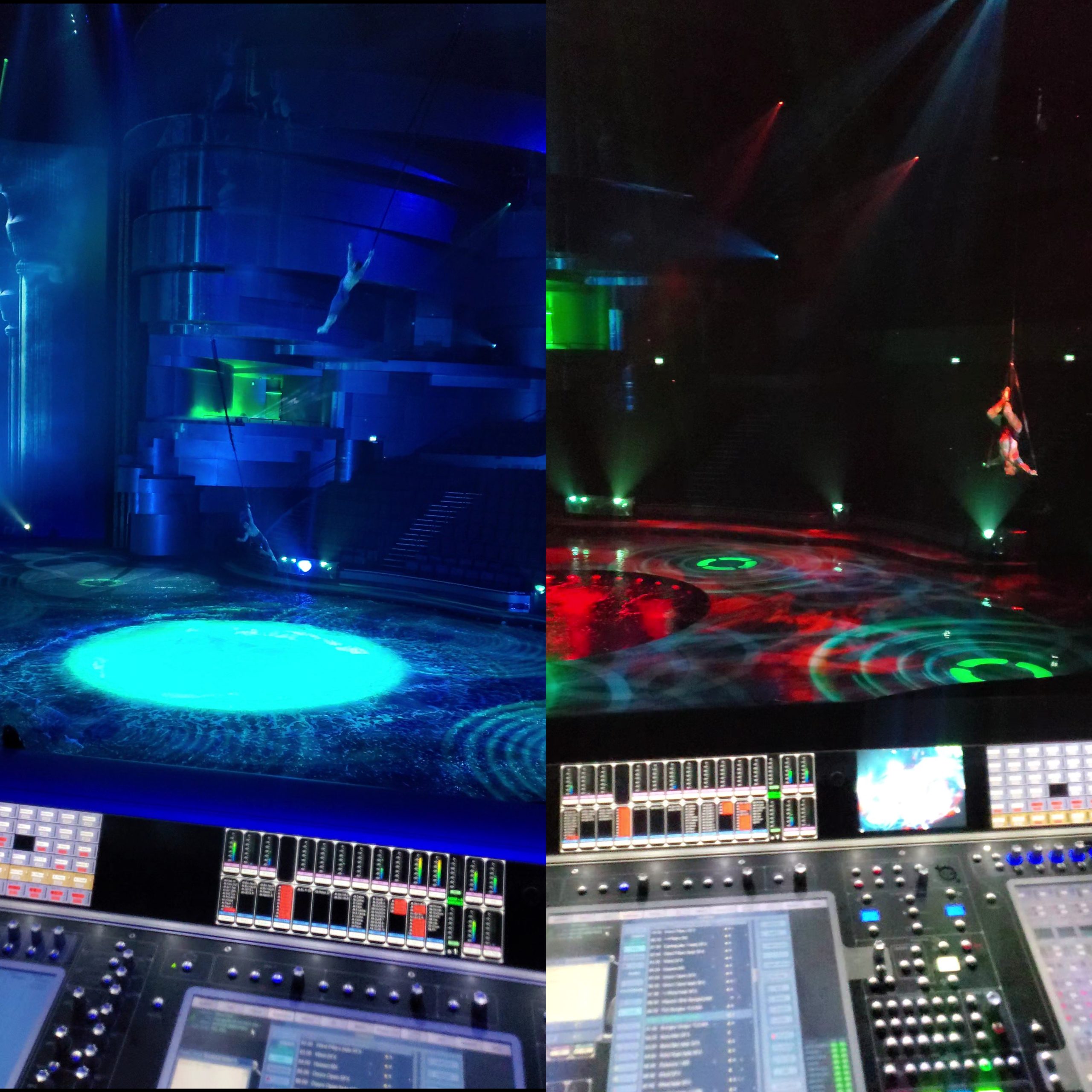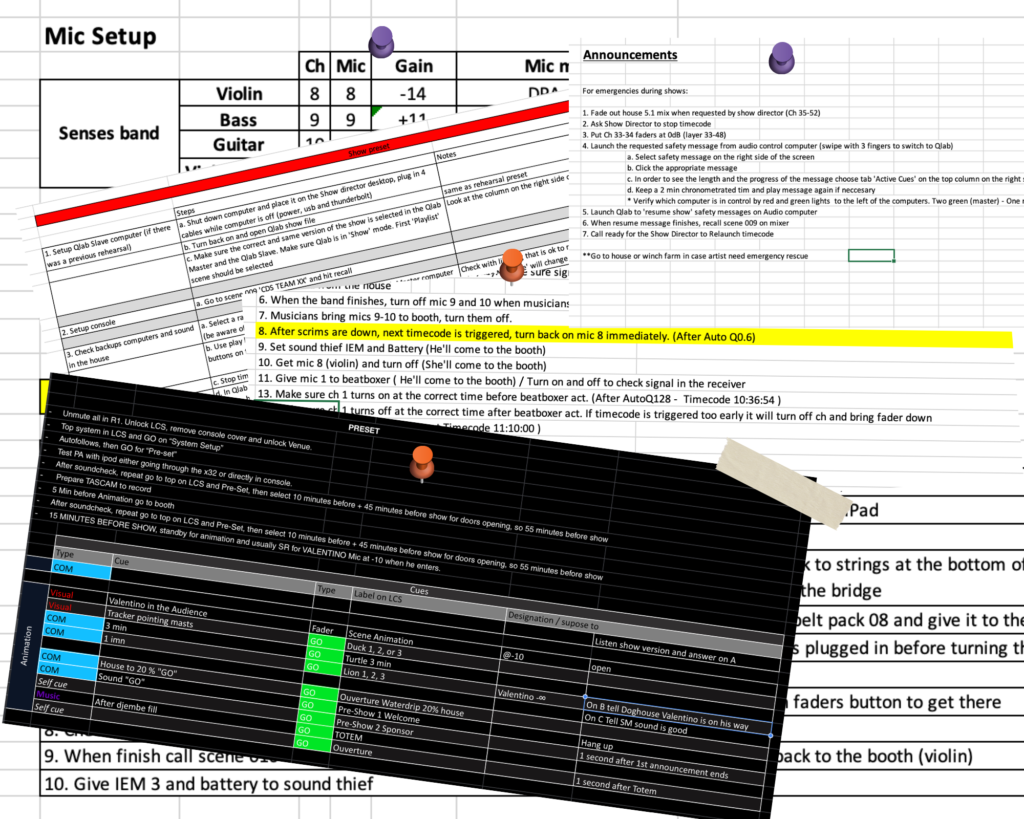The first time I ran a soundboard from FOH for a show with acrobatics, my main concern was not to get distracted by the act and by the anxiety that watching acrobatics and dangerous acts can cause. This feeling never goes away but you learn how to control it and to focus your attention on your cues and mixing. Especially when your track is a fundamental part of the show, as important as the music and sound effects can be, and especially when troubleshooting needs to be performed as effectively as possible in case of any surprise or technical difficulties because it can affect the act and performer’s safety. I might even claim that your mixing becomes second, safety is always first.
The way to achieve this concentration level starts by learning mainly four things: learn your gear, learn the act/show, learn the cue sheet and learn the music. As with any job, knowing the tools and gear you have to perform your job is fundamental, even getting used to the physical position of it and training your muscular memory can be important to efficiently do your job during a show with acrobatics that requires rapid response and accuracy. Many of the sound cues will be related to visual references, verbal cues, or musical cues during a show with acrobatics, so learning when an artist moves a leg or does a head bow, are as important as learning the key change in the music to trigger the next scene on your console.
As in other types of shows, acrobatics shows have a big crew of technicians backstage running different tracks to make the show happen. During the show (and rehearsals) we are all on Intercoms following a script read by a show caller. These scripts let each technician know the moment to run their specific cue, and it will be something like winch coming in, cue 27 go, door is clear, performers to position, house to 20% go, standby for …, etc. If you are running FOH, 99% of the time you won’t be listening to the show caller because there is a show to be mixed with both of your ears, but you may have cue lights triggered by them or you might have to hear momentarily the show caller channel to trigger your cue. Other show tracks for sound as monitors or backstage will probably hear the show caller during the whole show, adding it to the mix for the in-ears or carrying a belt pack just for coms.
Following artists’ movements to run cues, sound effects, or musical remarks might happen during the show too, like pushing the master for specific impressive moments of the acropachies or triggering sound effects for clown acts. This means that in addition to your audio console and processor you’ll run, you might always have another piece of gear with sound clips for this purpose, like Qlab, LCS Cue consoles, 360 Systems Instant Replay audio player, etc. Learning the acts and the different versions of them will help you follow the artist’s actions, if they decide to repeat an action or not, your cues may vary or not.
It will also be very important what to do in case of an emergency, you’ll be trained to follow emergency protocols depending on the situation (show stops, fire alarm, etc.) like triggering special announcements, playing waiting music, or even assisting artists on stage.
Cue sheets and track sheets are the best way to put together all the learning of the music, the act, and the cues. On them, you can specify preset instructions, the type of reference to take cues, what the cue does, when to take the cue, what the next cue is, and how fast you need to do it, act versions or show versions, etc.
Doing sound for acrobatic shows will always keep your attention to a maximum, there is no chance for missing cues or for big mistakes, and problem-solving will be your most valuable skill.

